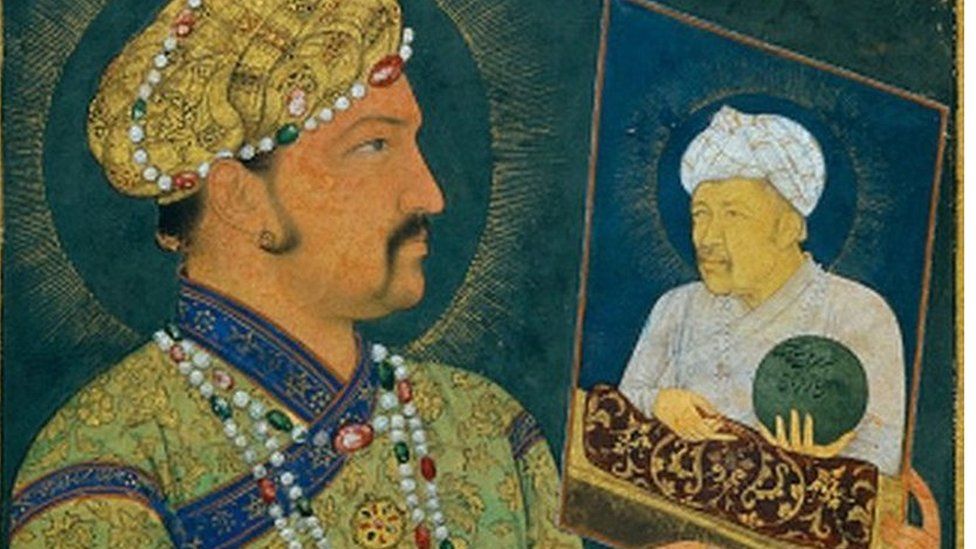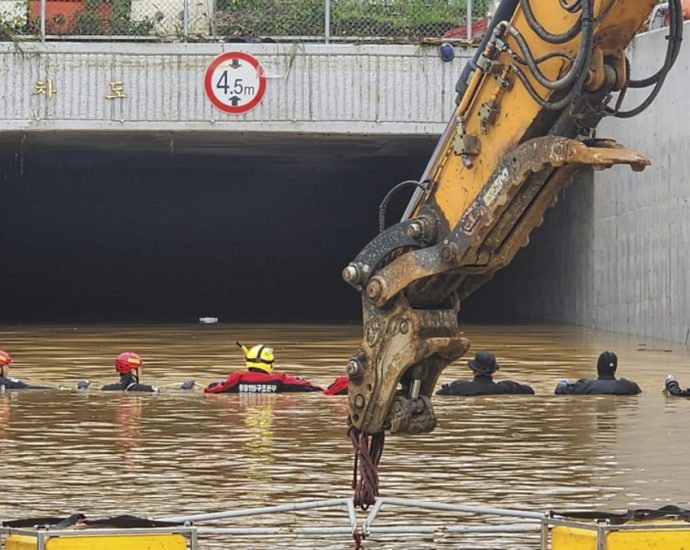Ayalaâs path to an ESG driven business | FinanceAsia

With several ESG-backed initiatives in recent years, the Philippines-based conglomerate Ayala has solidified its commitment to sustainability. Operating across verticals including energy, finance, infrastructure, and real estate, Ayala has committed to net zero greenhouse emissions by 2050. The conglomerate’s energy wing ACEN recently created the world’s first energy transition mechanism (ETM) in November 2022, backed by BPI and RCBC.
On the social front, Ayala’s GCash app and BPI’s BanKo have played pivotal roles in financial inclusion for unbanked Filipinos and small to medium size enterprises. BPI and Globe are currently reviewing their framework to consciously focus on these areas.
When it comes to governance, Ayala’s boards are working towards an appropriate level of diversity and independence. This involves maintaining high standards when it comes to transparency and disclosure.
The 190-year-old company’s social and sustainability initiatives have a long history. Albert de Larrazabal, CFO at Ayala Corporation said, “We have always aligned ourselves to national interest and had very high standards of governance and stewardship. As we must be mindful of the ecosystems we operate under, ESG in various forms has always been part of our value proposition.”
Ayala’s approach to ESG
Today, ESG-based financing is a priority for Ayala. Apart from ACEN’s implementation of the world’s first ETM, Ayala has issued a social bond with the IFC in support of its cancer hospital. Larrazabal said, “We are looking to do KPI-linked social and ESG financing, which incorporates targets into the commercial terms and conditions of the loan.”
Even during the M&A process, the conglomerate is mindful of integrating new acquisitions into its ESG framework. Ayala has also taken steps to ensure that ESG is a priority that is ingrained at the highest levels of the organisation, leveraging its membership with the World Business Council for Sustainable Development (WBCSD). The conglomerate’s board has received training which ensures they can play an active role in tracking and monitoring developments in the ESG space.
Corporates making public commitments to sustainability draw a lot of attention, not all of it positive. Asked how Ayala approaches concerns about greenwashing, Larrazabal said, “Sometimes it happens inadvertently because of incorrect measurements. That’s why we brought in South Pole. We have taken steps to ensure we are on the right track by committing to independent verification, to give people a degree of reassurance.”
Building a model for the APAC region
While the need for sustainable leaders is strongly felt across APAC, many countries in the region have a minimal contribution to emissions — the Philippines emits half the global average on a per capita basis. Larrazabal said, “Between 80% to 88% of our emissions — depending on individual businesses — are scope 3.” These emissions are defined as the result of activities from assets not owned or controlled by a reporting organisation, but which are a part of its value chain. Larrazabal said, “Our scope 3 is somebody else’s scope 1 and scope 2. We need an environment that enables, incentivises, and if that fails, penalises those who disregard scope 1 and 2.”
Many emerging markets grapple with issues similar to those facing the Philippines — adopting renewable energy, while meeting the demands of a growing population and economy. As a result, ETM-like arrangements may be embraced to a greater extent. Asked for his advice on managing such a transaction, Eric Francia, president and CEO at ACEN said, “It is important for investors to reconsider their position on coal, so long as the principles are well understood. One may be investing in a coal plant, but for a good purpose, which is enabling its early retirement.”
Offering a financial perspective on the ETM, TG Limcaoco, president and CEO Bank of Philippine Islands added, “We provided lending and brought in other institutions. We took reduced rates of returns for equity and debt exposure, which allowed us to shorten the life of the plant by 10 to 15 years. It is a big win for everyone involved.”
For more on Ayala’s adoption of ESG and a deeper insight into the world’s first ever ETM, please watch the accompanying video.
¬ Haymarket Media Limited. All rights reserved.
The remarkable story of a fiery Indian courtesan
 Manish Gaekwad
Manish Gaekwad“I danced in the dark. I used to light up the room with candles and perform. In the blackout, my naseeb (fate) was going to shine.”
The year was 1962. War had broken out between India and China over a disputed border and the Indian government had declared a state of national emergency.
Fear gripped people as wailing sirens and days-long blackouts became a part of daily life. The future seemed uncertain.
But Rekhabai wouldn’t let the fear of dying dictate her destiny. Instead of shutting shop like the other courtesans (women entertainers), she would dress up in a beautiful sari night after night and sing and dance for the groups of men who came to watch her in the kotha – a Hindi word for a place where professional female dancers performed for men, or sometimes, even a brothel.
Her life had taught her that hardship was often a gateway to opportunity, or at least, survival. Rekhabai’s tumultuous life is now the subject of a book, The Last Courtesan – Writing My Mother’s Memoir, authored by her son Manish Gaekwad.
“My mother always wanted to tell her story,” Gaekwad says and adds that he felt no shame or embarrassment in narrating it as, having lived with her in the kotha up until his late teens, her life was no secret to him.
“Growing up in a kotha, a child sees a lot more than he should. My mother knew this and didn’t feel the need to hide anything,” says Gaekwad. His book – written from the memories his mother narrated to him – gives the reader a shockingly honest look into the life of an Indian courtesan is the mid-1900s.
Courtesans, also known as tawaifs in popular culture, have been around since 2BC in the Indian subcontinent, says Madhur Gupta, an Odissi dancer and author of Courting Hindustan: The Consuming Passions of Iconic Women Performers of India.
“They were women entertainers whose function was to entertain and pleasure royalty and the Gods,” says Ms Gupta. Before India came under British rule, courtesans were viewed as respected performers; they were highly trained in the arts, wealthy and enjoyed the patronage of some of the most powerful men of their times.

“But they also faced exploitation at the hands of men and society,” Ms Gupta says. India’s courtesan culture began to decline after the British – who saw them as “nautch girls” (dance girls) or merely sex workers – enacted laws aimed at curbing the practice.
Their status declined further after India gained independence in 1947 and many courtesans were forced to turn to prostitution to survive. The practice has completely died out now, but stories of famous courtesans and their fascinating lives live on in books and films.
And one such story is that of Rekhabai.
She was born in a poor family in the western city of Pune as the sixth among 10 siblings. Rekhabai doesn’t remember the exact year or date, her memory about time is hazy. Tired of siring five girls, her drunk father allegedly tried to drown her in a pond after she was born.
At the age of nine or 10, she was married off to settle a family debt, and was later sold by her in-laws to a kotha in Bowbazar area in the eastern city of Kolkata.
She was not yet a teenager when she began training as a tawaif, learning to sing and dance. But her life and earnings were controlled by a female relative who was also a courtesan there.
During the India-China war, the relative left and Rekhabai got a chance to take charge of her own life. Her candlelight performances helped her become independent and left her with the realisation that she could be her own provider and protector if she was brave enough.
This would become her guiding principle for the rest of her life. Rekhabai – unlike her famous Bollywood counterparts in the films Umrao Jaan and Pakeezah – never pined after a man. She chose not to remarry, despite having a long list of patrons who courted her – from small-time criminals to rich sheikhs and renowned musicians – as it would mean having to give up her life as a tawaif and leave the kotha.
The kotha – the small space in which she performed, lived, raised her child and sheltered various members of her family at different times – ironically became a symbol of freedom and power for her.
Yet, it was also a space fraught with conflict and hardship, where circumstance ate away at innocence, stripped away humanity and evoked destructive emotions like rage, fear and despair.

In the book, Gaekwad narrates some deeply distressing memories his mother recounts, like when a thug pulled out a gun to shoot her after she refused to marry him.
In another place, Rekhabai recounts the abuse she faced from courtesans who were jealous of her success. Some tried to intimidate her by hiring gangsters to lurk outside her room; others called her a prostitute when she wasn’t one.
But the kotha also forged her into the steely woman she became eventually. It’s where she discovered her talent as a dancer, and the power it wielded over men looking to escape their own insecurities or the tedium and melancholia of life.
It’s where she learnt to read men by the way they treated her and to placate egos when needed, or shred them to bits if they threatened to destroy her own.
“I had mastered the language of the kotha. I had to speak it if required,” she says.
But along with this feisty, charming, street-smart performer, the kotha also saw Rekhabai transform into a doting, fiercely-protective mother who did everything in her power to give her son a better life.

As a baby, she kept him close to her in the kotha. She recalls how she would run to check up on him between performances if she thought she heard him cry.
Later, she sent him to a boarding school and then bought an apartment so that he could invite his friends over without feeling embarrassed.
She took pride in the man her son was growing into – even though his English medium-education and more refined upbringing in the boarding school made him different from her in many ways.
In a heart-warming anecdote, she recalls a time her son, who was visiting during vacations, asks for a fork and spoon to eat with.
“I knew of forks [kaanta in Hindi], but I had never heard what it was called in English before… I had to go to the market to buy them when you explained [what it was],” she says in the book.
In the late 2000s, the courtesan culture had completely vanished and Rekhabai left the kotha to live in her apartment in Kolkata. She died in the western city of Mumbai in February. Gaekwad says he will always remain in awe of his mother, her fortitude, talent and zest for life.
“I hope men read this book,” he says, and adds that Indian men have these “constructs around the mother figure, where she has to be a paragon of purity”.
“But I hope this book helps people identify the individuality of their mothers and accept who they are as people, independent from their relationship with us.”
BBC News India is now on YouTube. Click here to subscribe and watch our documentaries, explainers and features.

Read more India stories from the BBC:

-
-
19 February 2022

-
More buildings putting in AI, smart sensors to manage utilities, cut costs

The system, developed by property technology firm Qornerstone, has helped to keep the condominium management team lean with only five workers for the entire 754-unit property.
“The built environment has always been a manpower-intensive industry,” said Qornerstone chief executive officer Ernest Ong.
“So due to cost pressure, that is where the industry has no choice but to look into transformation by technology means.”
MANAGING RESOURCES
Fu Yu Corporation, a manufacturer of plastic products, also uses a similar platform to manage its resources, from taking room temperatures to controlling light switches remotely.
These are done using a system developed by software solutions provider Cerexio, which monitors in real-time using sensors.
Singapore Night Festival 2023 will have a roller skating rink, exclusive cocktails, projection mapping and more

PARTNER PROGRAMMES
Live out your Night At The Museum dreams with After Dark where interesting characters come to life after sunset at Children’s Museum Singapore. Listen to the stories from a postman, a baker and a bird watcher as you explore the museum.
Date and time: Aug 18, 19, 20, 25, 26, 7.30pm to 8:30pm; 8:30pm to 9:30pm; 9:30pm to 10:30pm
Venue: Children’s Museum Singapore
Ticket: Free
EXPERIENTIAL PROGRAMMES
What’s a festival without treats and tipples? Port Cities Food: A Culinary Pairing is a guided tour through Middle Road where attendees can enjoy kueh and cocktail (or mocktail) pairings, accompanied by stories that unveil Middle Road’s gastronomic heritage.
Date and time: Aug 18, 19, 25, 26, 5.30pm to 7pm
Venue: Various points throughout BBB
Ticket: From S$42. Tickets can be purchased here.
For more information on all events, visit the Singapore Night Festival website.
Malaysia state polls: How has Islamic party PAS maintained dominance in Kelantan, despite slow pace of development?

“We must not discount the role played, the welfare and how it reaches out to the grounds, tackles problems (such as) people’s basic needs to continue living,” said Dr Norshahril Saat, Senior Fellow at the ISEAS-Yusof Ishak Institute.
“PAS goes to the grassroots to visit an ailing person or person seeking help, and it is how the party touches people at the grassroots.”
PAS, which has built a fortress in Kelantan, is also solidifying its influence in Terengganu and Kedah.
Together with another Malay party Parti Pribumi Bersatu Malaysia (Bersatu), PAS is part of the Perikatan Nasional (PN) coalition that swept all but one parliamentary seat in these three states at Malaysia’s 15th General Election.
Observers have termed PN’s triumph as the “green wave”, and the tides seem to be moving west and south.Continue Reading
Commonwealth Games: 2026 event in doubt after Victoria cancels
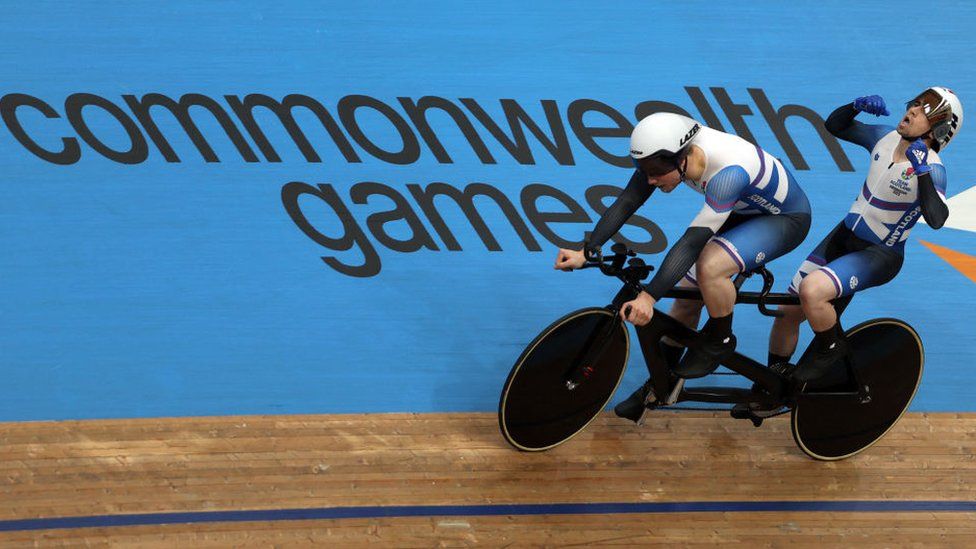 Getty Images
Getty ImagesThe 2026 Commonwealth Games are in doubt after the Australian state of Victoria cancelled its plans to host due to budget blowouts.
Organisers had struggled to find a host city before Victoria volunteered in April 2022.
At the time, the tournament was billed as a boom for the state’s regions, which would host most events.
But the premier said the projected cost had now tripled and become “well and truly too much” for Victoria to bear.
“I’ve made a lot of difficult calls, a lot of very difficult decisions in this job. This is not one of them,” Daniel Andrews told a press conference on Tuesday.
Mr Andrews said his government had informed Commonwealth Sport – who are yet to comment – of the decision to seek to terminate the contract, adding that “amicable and productive” meetings had occurred in London overnight.
He said Victoria had been approached by the governing body last year and had been “happy to help out” but “not at any price”.
Organisers had originally estimated the event – hosted across cities including Geelong, Bendigo and Ballarat – would cost A$2.6 billion (£1.4bn; $1.8bn). But now the 12-day tournament was expected to cost A$6-$7 billion, Mr Andrews said.
“Frankly… we’re not doing that… That is all cost and no benefit,” he said.
Victoria will still complete the stadium upgrades it had promised ahead of the games, while using the money it is now saving on housing and tourism initiatives.
Opposition Leader John Pesutto said the decision is a “massive humiliation” for the state.
“The cancellation of the Commonwealth Games is hugely damaging to Victoria’s reputation as a global events leader,” he said in a statement.
Australia has hosted the Commonwealth Games six times – including on the Gold Coast in 2018 and in the Victorian capital of Melbourne in 2006.
Related Topics
Rescuers recover last body from flooded South Korean tunnel
SEOUL: Rescue workers recovered the last body and ended search operations at a flooded underpass in South Korea where more than a dozen people died in an incident that is now the subject of multiple official probes. South Korea is at the peak of its summer monsoon season, and daysContinue Reading
Prigozhin & Surovikin gone, Wagnerâs back to fight
Wagner troops are in Belarus training the army there. More Wagner troops are now in a convoy on their way to Belarus. A spokesperson for Wagner and one of its top leaders have released videos with essentially the same bottom line: they will defend the fatherland and support Russia’s military and civilian leaders.
Wagner’s troops are back and private military contractor appears to be positioning to play a strategic role for Russia and Belarus.
A new head for Wagner has been selected. He is Andrei Troshev, a highly decorated Russian army veteran, a colonel, 70 years old, who played a major role in Syria where he was directly involved in military operations. His nom de guerre is Grey Hair.

The cofounder and éminence grise of Wagner, Yevgeny Prigozhin, has disappeared.
On June 29th Russian President Vladimir Putin held a Kremlin meeting with about 30 Wagner commanders, including Prigozhin. (General Sergey Surovikin, another missing player, did not attend the June 29th meeting.)
This three hour-long meeting, according to the Kremlin, came with an offer from Putin. He is reported to have said that all of the Wagners “can gather in one place and continue to serve and nothing will change for them. They will be led by the same person who has been their real commander all this time.” That person, Putin said, is “Sedoy,” using the Russian word for Grey Hair.
In reply Prigozhin said, “No, the guys do not agree with this decision.”
Prigozhin’s reply effectively terminated his control of Wagner. After the meeting, on either June 4 or 5, Russian police and the FSB (Russia’s successor to the KGB) raided Prigozhin’s large estate in St Petersburg.
Different reports popped up, some saying that Prigozhin had gone to his mansion in St Petersburg in a limousine to pick up his money and guns that were seized previously. Another report had him reporting to FSB’s offices in St Petersburg, doing the same thing. But in both cases these were rumors and no eye witnesses came forward.
It seems, in retrospect, that these stories and others were designed to keep Prigozhin’s actual fate under wraps.
The Prigozhin-led attack aimed at Moscow on June 24 was a near disaster for Putin. The Russian leader was moved out of Moscow as a security precaution. Loyal forces, including Chechens, presidential guards and police, were moved in to protect the Defense Ministry in Moscow, Prigozhin’s main target.
Prigozhin apparently believed that key leaders in the army, aside from Defense Minister Sergey Shoigu and Chief of Staff General Valery Gerasimov, would support his takeover, purge the defense minister and chief of staff and put Prigozhin and, perhaps, Surovikin in charge of Russia’s armed forces.
Putin would be handed a fait accompli. Either he could accept the change or, in Prigozhin’s view, he would be replaced. Prigozhin saw himself as Russia’s power broker and, depending on how things turned out, perhaps Russia’s new President.
Putin, it seemed, also was unsure about the loyalty of the army. That uncertainty was no doubt prompted by concern over “General Armageddon,” Sergey Surovikin.
Surovikin, who served as a special consultant to Prigozhin and Wagner, was extremely angry with the army’s leadership. Surovikin had been commander in chief of Russia’s armed forces from October 8, 2022, until January, 2023, when he was replaced by Valery Gerasimov.
Surovikin was given the vague title of deputy to Gerasimov and, while formally keeping the job, became a special consultant to Prigozhin. Surovikin’s humiliation, dished out by the old guard in the Army, no doubt led him to back Prigozhin strongly. The two of them made their move after the Bakhmut victory.
On June 24, as Wagner forces moved toward Rostov on Don, Surovikin made a self-serving video claiming that the invasion was wrong and saying that the Wagner forces should return to their bases. There is a presumption that this video was made to avoid any future prosecution if the Prigozhin-led coup d’état failed.
In late June Surovikin’s daughter allegedly told Baza, a Telegram channel, that Surovikin was working from home and had not been detained. Subsequently, Surovikin’s wife reported that her husband had not come home.
According to the Wall Street Journal and other outlets, Surovikin was detained along with thirteen other army officers.
Disposition of Wagner forces
It is now known that some Wagner forces are in Belarus training regular army forces there.
Andrey Kartapolov, who chairs the Russian parliament’s defense committee, said: “It is clear that Wagner went to Belarus to train the Belarusian armed forces. There is such a place as the Suwalki Corridor. Should anything happen, we need this Suwalki Corridor very much. A strike force is ready to take this corridor in a matter of hours.”
Poland has been massing forces along the border with Belarus, causing alarm in Minsk and Moscow. Foreign advisors, including the British, are now serving as technical aides to Polish forces at the Belarus border, signaling to Russia that the real issue might be a NATO initiative to bail out Ukraine by attacking Belarus, forcing Russia to divide its forces.
The Suwalki Corridor is a 96 km strip of land that connects the Russian enclave of Kaliningrad to Belarus. While Kaliningrad can be supported by sea or by air, the land bridge is important to assure normal communications. There are both roadway and rail links. This land strip is Polish territory on one side, and Lithuanian on the other.

Last year the Lithuanians blocked shipments along this route, lifting the blockade after the Russians threatened serious consequences. The Corridor is also thought of as a weak link for NATO since it is the only NATO land connection to the Baltic states from Poland and from Europe. Other than airlift, this is the land route NATO needs to support these countries.
Indian Punchline reports that, in a weekend interview, the number two German party Christian Democratic Union’s “leading foreign and defense expert Roderich Kiesewetter (an ex-colonel who headed the Association of Reservists of the Bundeswehr from 2011 to 2016) suggested that if conditions warrant in the Ukraine situation, NATO should consider a move to ‘cut off Kaliningrad from the Russian supply lines. We see how Putin reacts when he is under pressure.’”
On July 6 the Russians flew a Tu-214SR and two Su-30M fighter jets in international waters near Kaliningrad and on to Russia. They were met by British Typhoons that flew from Estonia to shadow them. The Tu-214SR is known as the Russian “Doomsday” plane. It is a mobile command and control platform with an extensive multi-intelligence payload. (See TASS photo below.)

The Tu-214SR was likely in the area reporting on Polish and NATO operations close to Belarus and Kaliningrad. The Russians regard Kaliningrad as having great strategic importance and are sensitive about developments that may threaten the enclave.
The US position on these developments is not known, but what is clear is that Ukraine is now taking heavy losses and may be on the cusp of losing the war with Russia.
There have been a number of negative reports coming from the Pentagon including Ukrainian Chief of Staff Valerii Zaluzhny, trying to rethink the failed Ukrainian offensive.
Africa
It appears that the deployment of Wagner forces in Africa is being normalized. Around 200 Wagner troops, in effect a normal rotation, have now arrived in the Central African Republic. They were flown there by COSI ( Community of Officers for International Security), a Wagner affiliate, on military helicopters. Earlier reports that there was a purge of Wagner forces in Africa appear to have been wrong and confused a force rotation with a purge.
Strategic Issues
The Ukraine war is part of a proxy battle between NATO and Russia. While there are indeed subsidiary issues important to the main combatants, for example the Russian-speaking population of Ukraine, NATO built up Ukraine’s forces before the Russian invasion to have sufficient force to take back key territories in the Donbas and Crimea. The NATO buildup was part of a plan to bring Ukraine into NATO and strategically isolate Russia.
The Russians countered the NATO plan, forcing the issue of the Ukrainian army buildup by openly invading Ukrainian territory. But before Russia sent its forces over the border, the Russians tried to engage Washington and NATO in a diplomatic process aimed at sorting out Russia-NATO and Russia-US issues. The effort took its most mature form in December, 2021, but it failed as both Washington and NATO refused the Russian initiative.
The issue of bringing Ukraine into NATO is still unresolved, even after the latest NATO summit in Vilnius. The Summit itself had hopes of declaring victory in Ukraine and even foresaw the overthrow of the Russian government. There were secret talks with key Russian figures, including Prigozhin.
But the Prigozhin coup failed and the Russians successfully fended off the long-awaited Ukrainian offensive. Ukraine suffered very high casualties and the initial loss of at least 20% of the Western equipment sent there to win the fight. Systems such as the German Leopard tank and the American Bradley infantry fighting vehicle were unsuccessful and an embarrassment.
Worse than that, the battle (still ongoing) revealed that systems and tactics designed to protect NATO from Russia were inadequate and based on a number of erroneous assumptions about war fighting.

It is far from clear that any gambit to try and save Ukraine by widening the war to Belarus would succeed, and doing so could put Europe into a general war on its territory. NATO is not prepared for war now. The failures in Ukraine amply illustrate that.
While it may be true that NATO can muster superior airpower, it would have to fly against effective Russian air defense systems and Russian fighter aircraft. But the big war would be on the ground, and NATO can’t fight that war now, possibly never can.
Will Washington use its proxy, Poland, to attack Belarus to try and save Ukraine?
Wagner forces are now risen from the ashes and Prigozhin and Surovikin are gone. If the chairman of the Duma’s Defense Committee is right, those forces are prepared to take the Suwalki corridor in case Poland starts a war with Belarus.
Stephen Bryen is a senior fellow at the Center for Security Policy and the Yorktown Institute. This article was originally published on Weapons and Strategy, his Substack. Asia Times is republishing it with permission.
First look at the new Meta: Chef Sun Kim goes back to his Korean roots at his one-Michelin star restaurant

Separating the reception area from the dining room is a black steel and glass paned sliding panel referencing the windows of traditional Korean hanok houses that are made with traditional hanji paper.
And, throughout the restaurant, the warm-toned, hand-plastered curved ceiling is complemented by bronze elements, honouring traditional Korean hand-forged bronzeware known as bangjja.
It’s apt that the restaurant’s evolution reflects the “metamorphosis” from which Meta takes its name.
When he first opened Meta, Busan-born Kim, an alumnus of Tetsuya in Sydney and Waku Ghin in Singapore, was serving a cuisine he termed “modern Asian, which drew inspiration from my past experiences”.
Back then, “I did not have much input in the design of the restaurant.” The Keong Saik area was “very casual, young and energetic… a melting pot with restaurants of different cuisines and trendy bars, so it was an ideal location for us to be serving our modern Asian menu.”
Typhoon Talim: Thousands evacuated as typhoon hits southern China
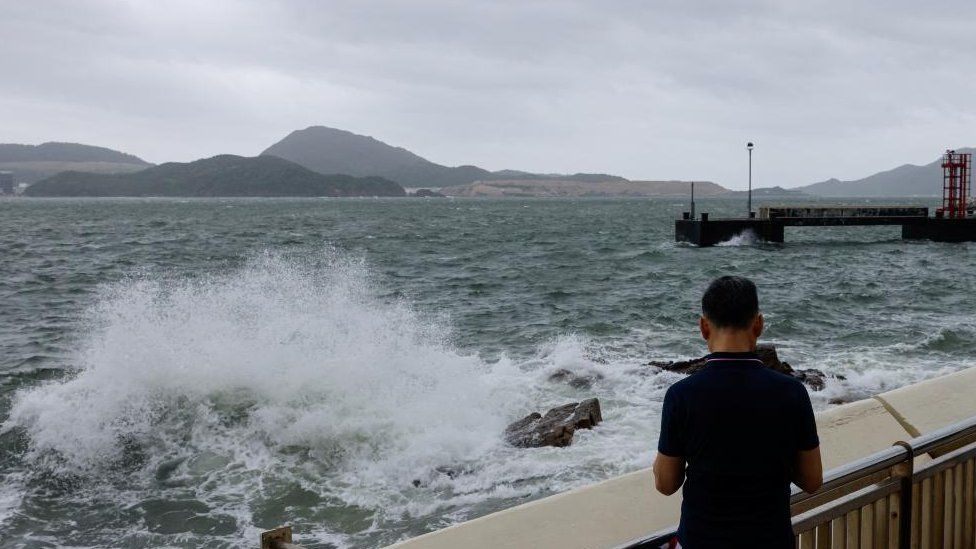 Reuters
ReutersA powerful typhoon has made landfall in China’s Guandong province with nearly 230,000 people evacuated from their homes.
Talim, the fourth typhoon this year, hit the southern coast with winds of nearly 140km/h (87mph).
Storm surges lashed the coast, while fierce winds and rain led to hundreds of flights and trains being cancelled.
Vietnam said it was evacuating around 30,000 people in Quang Ninh and Hai Phong, forecast to be hardest hit.
Talim made landfall at around 10:20 local time (14:20 GMT), the China Meteorological Administration said, issuing an orange alert, its second-highest warning in a four-tier system.
The typhoon could lose speed by Tuesday morning and “weaken and dissipate over northern Vietnam” on Wednesday, it added.
Those evacuated in Guangdong included more than 8,000 fish-farm workers who were brought ashore, Chinese state media say.
Local authorities also ordered the closure of dozens of coastal tourist destinations.
The typhoon is expected to move to the Beibu Gulf in the South China Sea, and may make a second landfall in the coastal area of Guangxi Zhuang Autonomous Region on Tuesday morning, China’s National Meteorological Centre said.
Waves of up to six metres (20 feet) were expected to hit the southern island province of Hainan, the local marine forecasting station warned.
Related Topics
-
-
14 September 2022
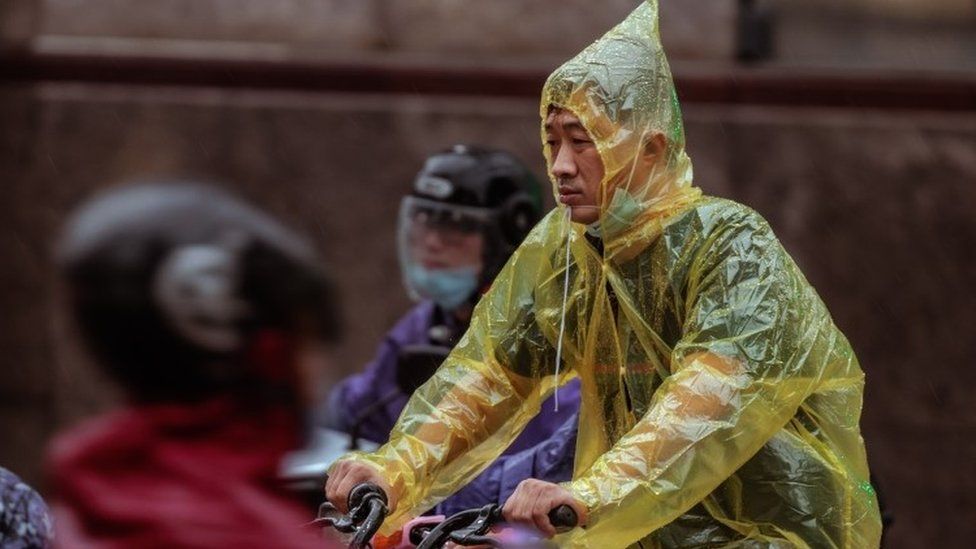
-
-
-
25 July 2021
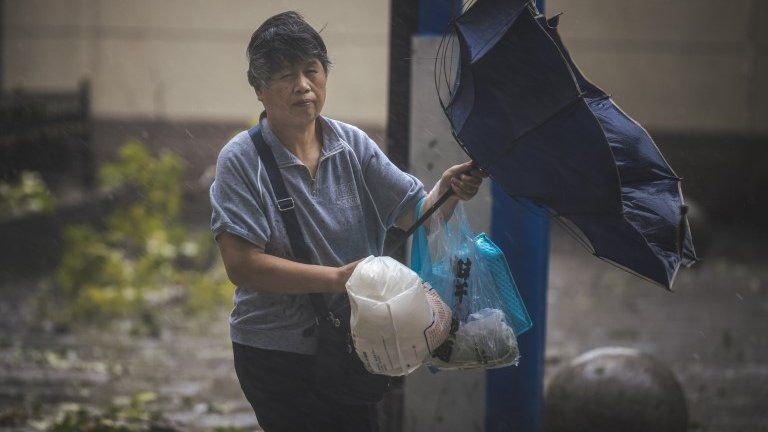
-


